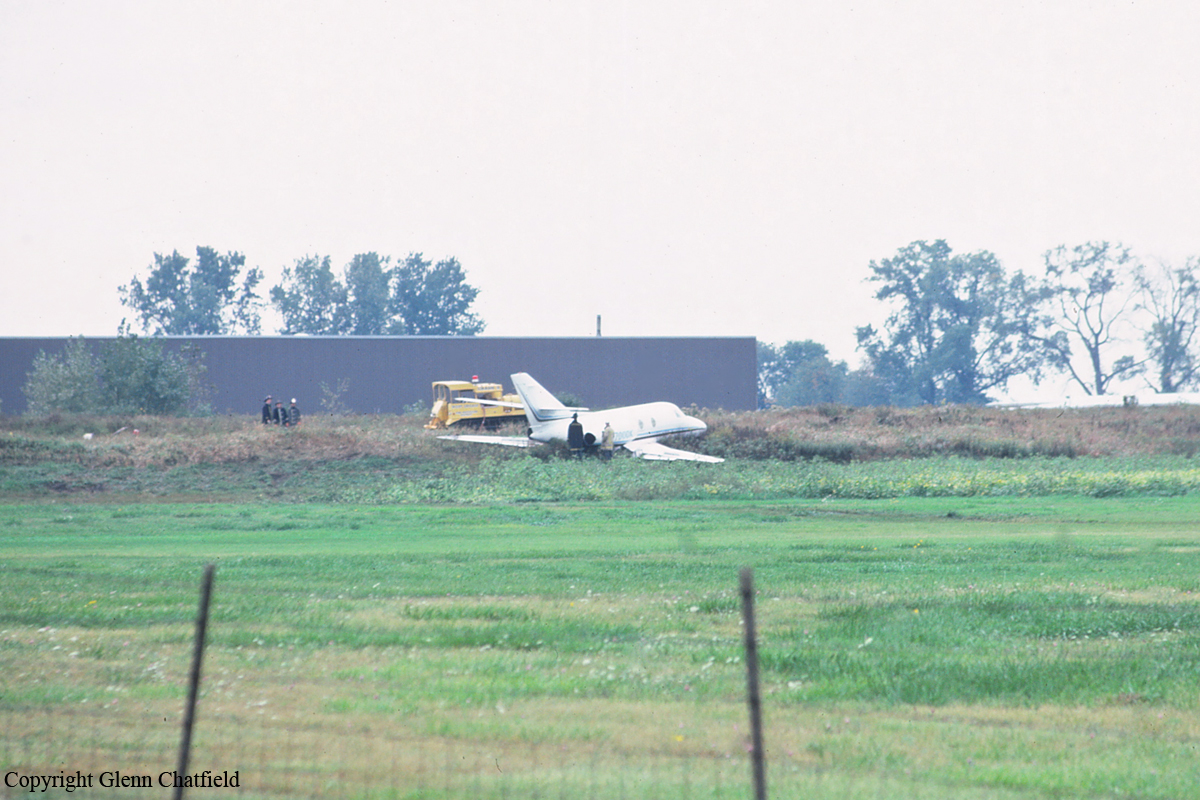Crash of a Dassault Falcon 10 in Rancho Murieta: 3 killed
Date & Time:
Oct 15, 1987 at 1528 LT
Registration:
N121FJ
Survivors:
No
Schedule:
Rancho Murieta - San José
MSN:
192
YOM:
1981
Crew on board:
2
Crew fatalities:
Pax on board:
1
Pax fatalities:
Other fatalities:
Total fatalities:
3
Captain / Total hours on type:
1200.00
Aircraft flight hours:
475
Circumstances:
The aircraft flew to the airport for a sales demonstration flight. The crew boarded the aircraft and taxied out for departure. Witnesses, including two pilots with aerobatic experience, watched the aircraft departure, make a left traffic pattern and do a low fly-by down the runway. At the departure end of the runway, the aircraft pitched up into a steep climb. At 600 feet agl, the aircraft entered a left aileron roll, which the witnesses said was 'smooth, coordinated and with the nose on the point.' At the inverted point of the roll, the roll changed from an aileron to a barrel roll. One pilot witness said that it appeared the 'crew lost it at the top' and that the crew 'held the back pressure too long at the top.' At the 270° point of the roll, the aircraft was seen to 'fall out' or 'dish out' of the roll; it recovered to wings level flight at about 100 feet agl in a very nose high attitude settling into the ground with a high vertical descent rate. No preimpact eng or control system malfunctions were found. All three occupants were killed.
Probable cause:
The National Transportation Safety Board determines the probable cause(s) of this accident to be:
In flight loss of control by the pilot flying while performing an Intentional low level aerobatic maneuver.
Findings
Occurrence #1: loss of control - in flight
Phase of operation: maneuvering
Findings
1. (c) judgment - poor - pilot in command
2. (c) aerobatics - intentional - pilot in command
3. (f) ostentatious display - pilot in command
4. (f) altitude - inadequate - pilot in command
5. (c) flight controls - improper use of - pilot in command
----------
Occurrence #2: in flight collision with terrain/water
Phase of operation: descent - uncontrolled
In flight loss of control by the pilot flying while performing an Intentional low level aerobatic maneuver.
Findings
Occurrence #1: loss of control - in flight
Phase of operation: maneuvering
Findings
1. (c) judgment - poor - pilot in command
2. (c) aerobatics - intentional - pilot in command
3. (f) ostentatious display - pilot in command
4. (f) altitude - inadequate - pilot in command
5. (c) flight controls - improper use of - pilot in command
----------
Occurrence #2: in flight collision with terrain/water
Phase of operation: descent - uncontrolled
Final Report:











